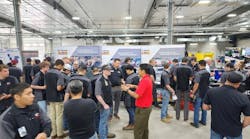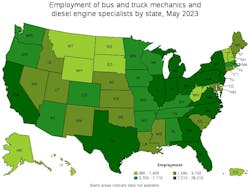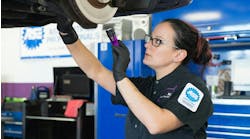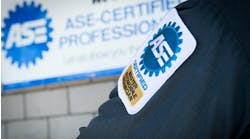Building better tech recruiting with four healthy habits
Though there’s still “a really big need for technicians across the country,” the technician shortage is not hitting all shops and fleets the same way, according to Jay Goninen, co-founder and president of WrenchWay. He has seen a shift across the country.
“Not as many shops are as crazy desperate as they were for technicians just even back a year ago,” Goninen said on a virtual discussion hosted by Fullbay in June. “I think the change is more geographically driven, depending on where you're at and your ability to get out in front of good technicians.”
The most recent occupational employment by location data from the Bureau of Labor Statistics supports this as well. One factor is of course population, which determines how many bus and truck technicians and diesel engine specialists will be needed. For instance, Wyoming currently employs 940 of such techs, while Texas has over 28,000. The other thing to look at is location quotient (LQ), or the ratio of technicians employed in a given state compared to the nationwide average. Colorado features a lower concentration (LQ of .77) while Texas has a higher one (LQ of 1.12).
Regions with a lower LQ will face more competition for techs and thus must put more emphasis on efficient hiring practices, but even shops in areas in areas with high LQs should remain vigilant for talented technicians, as retaining your best techs is never assured.
“Always be hiring—because you never know,” said Jennifer Wilson, co-owner and CEO of California-based Inland Empire Fleet Maintenance at Fullbay's Diesel Connect Conference in May. “As much as we try to treat our employees like our own, sometimes candidates just walk out the door for a buck.”
But the hiring process can be a full-time job on its own, and one that shop managers don’t have the time for between day-to-day operations. To decrease that work, shops and fleets should ensure their processes are aligned before they need to hire a new tech.





